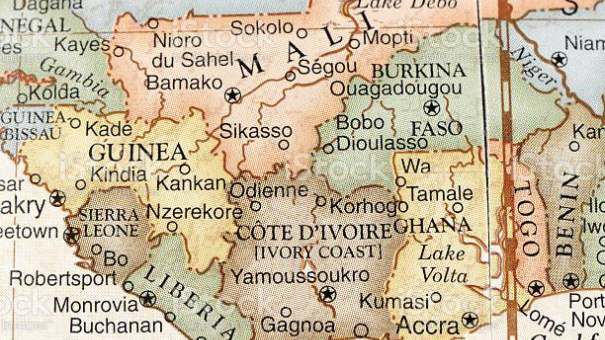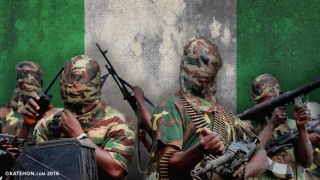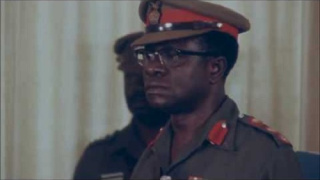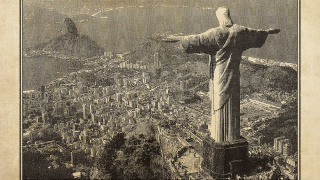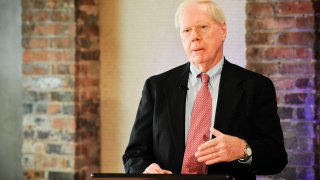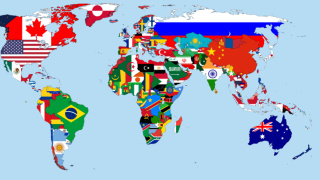The Malformation of West Africa
In 1927, Ladipo Solanke – co-founder of the West African Students Union (WASU) – published a book in which he argued that “It took the white race a thousand years to arrive at their present level of advance: it took the Japanese, a Mongol race, 50 years to catch up with the white race, there is no reason why we West Africans, a Negro race, should not catch up with the Aryans and the Mongols in one quarter of a century.” (Solanke, 1927: 58). All that would be needed to achieve this, for Solanke, would be “a strong self-determination to take up and money to back up,” as well as active cooperation among West Africans. Sir Henry J. Lightfoot-Boston, in an article titled Fifty Years Hence, prophesied a federation of West African territories by 1976 (Boahen, 1982: 40).
The fulfilment of such grand visions has continued to elude the region for decades. West Africans, and indeed many from outside the region, have not only underestimated the difficulty of development in general and in the region in particular, but have understated how crucial it is to examine the difficulties within a regional framework.
Developmental and Regional Difficulties
In the case of the former, the worldwide development experience since the 1960s and the multitude of crises in West Africa have demonstrated that development and stability are not merely matters of “political will” or “strong self-determination”. Particularly for West Africa, there is a reason why the great empires and societies of the interior (the Western Sudan) which had the highest levels of integration with the rest of the world, elite Arabo-literacy rates and the largest empires in the pre-Atlantic period now rank the highest in poverty rates and the lowest in economic production, anglo-literacy rates, and many other measures of human development.
There is a reason why West Africa had the highest incidence of military coups in Africa following political independence (McGowan, 2003: 355); why the region is a major center of diffusive terrorism on the continent; and why it is experiencing a current climate of violence between farmers and pastoralists that is “unprecedented in modern times” (Brottem, 2021: 2). There is a reason why West Africa, along with Central Africa, has the highest transport costs and lowest transport quality in a continent which has the highest transport costs in the world (Teravaninthorn and Raballand, 2009: 17).
There is a reason why, according to the latest attempt to quantify political settlements of developing countries (Schulz and Kelsall, 2020), West Africa ranks the lowest in Africa in terms of virtually all the variables identified by Whitfield et al. (2015) as critical for industrial policy success. Yet presidential elections and development discourse within nations in West Africa continue to be dominated by simplistic narratives of “good governance”, “corruption” and “political will”.
With regard to understating the importance of adopting a regional lens, this has been the case since the late colonial period when self-government began to be extended to the colonies on a territorial rather than regional basis. The movements for West African cooperation fostered by the National Congress of British West Africa (NCBWA), its eventual rival, the Universal Negro Improvement Association (UNIA) and student organizations such as the West African Students Union (WASU) and the Fédération des étudiants d’Afrique noire en France (FEANF) (Black African Students Federation in France) went into decline in West Africa as nationalist territorialism spread across the region in response to the expanded opportunities for legislative engagement which followed colonial acquiescence to some degree of self-rule (Boahen, 1982: 15). Efforts at creating regional federations, as pre-eminently envisaged by Kwame Nkrumah, did not succeed, and faded away after the fall of Nkrumah in 1966 (Serra, 2014: 21-22). Since then, “Although rhetorical support for integration exists, there is no dominant personality to articulate a vision and turn it into a crusade the way Nkrumah once did.” (Lavergne and Daddieh, 1997: 105). There is also an absence of an “integration culture” in the region, among governments, business communities and ordinary people (Bundu, 1997: 38).
The Malformation of West Africa
I argue that West Africa has undergone substantial malformation which began during the period of colonial rule. The collapse of the trans-Saharan trade order and the shift of economic power and opportunities towards the coastal regions of West Africa, reinforced by colonial-era abandonment of visions for trans-Saharan trade infrastructure, administrative fragmentation of West Africa, the institution of a systematic pattern of polarising coastal-biased colonial infrastructure and human capital investments, and the undermining and failure of attempts at regional federation in the late colonial and early postcolonial period have resulted in this malformation.
The downfall of trans-Saharan trade cut off Saharan and Sahelian economies and populations from economic opportunities from the north, while concentrating such opportunities in the Gulf of Guinea regions to the south. This intensified coastal-hinterland inter-regional inequalities during the colonial period, which strongly interacts with ethnic diversity and pre-colonial political centralization (Ray, 2018) to lead to a high frequency of coups (Paine, 2019), civil wars (Ray, 2016) and unstable political settlements (Green, 2011; Boone and Simson, 2019). Thus, in Togo for instance, the country’s first president, Sylvannus Olympio “was a scion of a commercial family from coastal Togo. His government included mainly people who came from southern Togo and belonged to the same ethnic group” (Heilbrunn, 1997: 476). This was until 1963 when the first military coup in postcolonial West Africa brought to power “a government more sympathetic to the needs of the northern population” (Heilbrunn, 1997: 476).
Likewise, the first civil war in West Africa had a strong north-south dimension, and during the events leading up to and including the war from the mid-1960s, “A return to the trans-Saharan routes of the precolonial days may have been a romantic dream held by some Northern secessionists” (Nixon, 1972: 489). Indeed, in the concluding sections of his famous book, Trans-Saharan Africa in World History, Austen (2010: 134) notes about Nigeria’s first military coup involving the assassination of Nigeria’s first prime minister, Abubakar Tafawa Balewa, in 1966: “—the prelude to a bloody civil war—indicates the problems that could arise from a split between the Saharan and Atlantic orientations of modern West Africa.”
Conflicts between sedentary and pastoral populations are also intensifying, since the complementarity between the sedentary core zones of the Sahel and the nomadic zone of the southern Saharan desert-edge were disrupted by colonial territorial fragmentation and the collapse of trans-Saharan trade (Lovejoy and Baier, 1975; OECD/SWAC, 2014: 40). The loss of agricultural estates in the savannah, population growth in the savannah, and the rise of commercial agriculture enabled by the railways to Atlantic ports cut off access to grazing pasture (Baier, 1976: 7). Thus, for instance, in contrast to the case before 1920 when “many of the leading merchants in Hausa society were recent Tuareg immigrants” (Lovejoy and Baier, 1975: 579), today when the Nigerien Tuareg migrate to Kano State in Nigeria, many live as guards and beggars, are “not connected into the development process of their host society”, and have high French, Arabic and English illiteracy rates (Barau, 2009). This is the background to the growing farmer-herder crisis across the region.
The failure of efforts at regional federation means that the landlocked countries of the Sahara-Sahel (Niger, Mali and Mauritania) are left without the infra-national fiscal transfers and development aid that the interior economies of the Gulf of Guinea countries (northern Nigeria, northern Ghana, northern Benin, northern Togo, northern Côte d’Ivoire, eastern Senegal, etc.) modestly receive. This is despite the fact that colonial French West Africa, which included all the Saharan and landlocked territories and several coastal colonies – making up over 73% of the West African land mass (Debrie, 2010: 294) – had high levels of spatial inequality compared to French Equatorial Africa, British East Africa and British West Africa and was therefore federated for “integrating richer coastal territories with vast hinterland areas through fiscal redistribution” (Frankema and van Waijenburg, 2014: 374). The French played a major role in breaking up this federation in the late colonial period, to weaken her colonies within and outside the French empire.
In addition to this, the absence of regional federation also means that smaller coastal countries, such as Gambia, Togo and Benin officially or semi-officially promote re-export strategies and fiscally benefit from the parallel economy (consisting of primary product exports or smuggled imports of manufactures and subsidised products) with their larger coastal and interior neighbours because partly because they are “too small or poorly endowed to industrialise or prosper on their own” (Meagher, 1997: 181). These larger coastal neighbours (Côte d’Ivoire, Ghana, Nigeria, and Senegal), paradoxically, are among the most inward-looking developing countries in the world (Dollar, 1992: 532), and therefore maintain the highest trade barriers in the presence of neighbours which systematically undermine and profit from such high trade barriers. Such parallel trade has therefore not only “undermined the development of industry and agriculture throughout the region” (Meagher, 1997: 183), but, in combination with the existence of borders, limits the size of markets for manufactured goods (Amin, 1973). Intra-regional trade and regional integration are also undermined in this environment.
Yet, while colonial rule produced highly imbalanced investment patterns, there was an overall suppression of indigenous economic opportunities and industrial promotion attempts, so that an overall condition of weak capitalist classes, weak middle classes, a weak manufacturing sector, low bureaucratic quality, and technological capabilities among capitalists prevailed, thus limiting the structural transformation capabilities of even coastal regions.
The collapse of trans-Saharan economic opportunities, the emergence of high levels of coastal-hinterland spatial inequalities, and the subjection of the interior to coastal (or, in landlocked Mali and Niger’s cases, the subjection of Saharan/bidan/semi-nomadic to Sahelian/sudan/sedentary) cultural hegemony have contributed to the steady growth of insecurity in the region. Thus, the Tuareg rebellion of the 1960s, 1990s and 2000s have evolved into terrorism and a Malian crisis which has spurred international and regional counter-insurgency efforts in the Central Sahara; while the Boko Haram insurgency has spurred similar regional counter-insurgency efforts in the Lake Chad region.
A Faded Golden Age
The 1970s may be regarded as a golden age of the emergence of West African counter-malformative measures, at the same time as new manifestations of malformation were rising (as with increase in parallel trade) and others persisted (weak regional redistribution mechanisms). The previous decade had just ended with the surrender of the Biafran army after three years of the largest civil war in the region, within the largest country and economy of the region. As a result, the post-war reconstruction came with increased realisation that national development planning had to more concertedly take into account inter-regional inequalities to enable social cohesion and balanced development. The oil boom which allowed a spectacular increase in Nigeria’s postwar national development expenditure also led to the Cement Armada from 1974, which stimulated new discussions in 1975 on alternatively developing Trans-Saharan trade routes. There were also attempts, continuing from the mid-1960s, at trans-Saharan highway construction in this decade, including the formation of the Trans-African Highway Bureau in 1971.
The post-civil war period also saw efforts by Nigeria at bilateral and multilateral industrial projects and to create ECOWAS, which stimulated the first, albeit superficially, attempt at a West African-wide redistributive mechanism through the Fund for Co-operation, Compensation, and Development, as well as reaction from coastal Francophone powers to create CEAO and its own normative redistributive mechanisms (Community Development Fund) demanded especially by the landlocked Sahel member states. The decade also saw the first call, by Hamani Diori of Niger, for a “Marshall Plan” for the Western Sahel in reaction to the 1973 drought – a drought which brought international attention to the Sahel for the first time. Researchers, scholars and development practitioners reacted to the drought by proposing grand plans for the region, aspirations reminiscent of the grand plans of the 19th century presented by European adventurers, utopians and statesmen. It was also the decade when dependency theorists like Samir Amin (1972) and Immanuel Wallerstein (1976) identified the systematic spatial unevenness in West Africa’s incorporation into the global economy under colonial rule, as well as other scholars who presented better understanding of the dynamics of malformative change in the Sahara and Sahel (Lovejoy and Baier, 1975: 556; Baier, 1976; Watts, 1983).
Conclusion
In addition to the many limitations of those golden age efforts, the decade unfortunately ended with the Third World crises, the lost decades of the 1980s and 1990s, and the fall of African economic history and dependency theory. In the 21st century, despite the renaissance of African economic history (Austin and Broadberry, 2014) and revitalised efforts at [liberal] regional integration, there remains a persistence of methodological nationalism in speaking about domestic problems which are actually regionally experienced; a compression of history in understanding the origins of problems, mainly from the early postcolonial years (Austin, 2008); and a poor popular culture of regional interaction as was observed with the National Congress of British West Africa (NCBWA), Rassemblement Democratique Africain (RDA), the Fédération des étudiants d’Afrique noire en France (FEANF), and West African Students Union (WASU).
This is despite the fact that the region’s challenges are expected to worsen. Carré et al. (2019: 1949) reveal that “In the context of the past 1600 years, the Western Sahel appears to be experiencing today unprecedented drought conditions. The rapid aridification that started ca. AD 1800 and the recent emergence of Sahel drought from the natural variability point to an anthropogenic forcing of Sahel drying trend.” This is therefore producing the “risk of a major drought crisis in the twenty-first century” (Carré et al. 2019: 1963). This is worsened by projections estimating West Africa’s population to reach almost 1 billion by 2060, and thus requiring massive employment-generating circuits in order to keep youth unemployment, over-urbanization and poverty at bay.
In terms of insecurity, successful counter-insurgency efforts in Mali, Burkina Faso and Niger risks pushing terrorists’ “territorial expansion towards the Gulf of Guinea countries and their desire to extend their influence beyond Sahelian countries,” especially northern Benin and Cote d’Ivoire (Konrad-Adenauer-Stiftung, 2021: 2). Global decarbonisation threatens the economic viability of fossil-fuel dependent countries like Nigeria, as well as minerals exporting countries like Niger, Mali and Mauritania which are already vulnerable to further aridification from climate change itself. Just as with the disruptions of the 19th century which led to commercial transitions and the eventual collapse of trans-Saharan trade, the disruptions of the 20th century which led to the collapse of regional federation efforts, military coups, civil wars, economic crises, and generalised Sahelian droughts, there is no rest for West Africa in the 21st and probably 22nd centuries. West Africans must wake up and develop an experimental and regional spirit, or else death and destruction will be the ones to wake us up with heavy smacks.
References
Austen, Ralph A. (2010). Trans-Saharan Africa in World History. Oxford: Oxford University Press.
